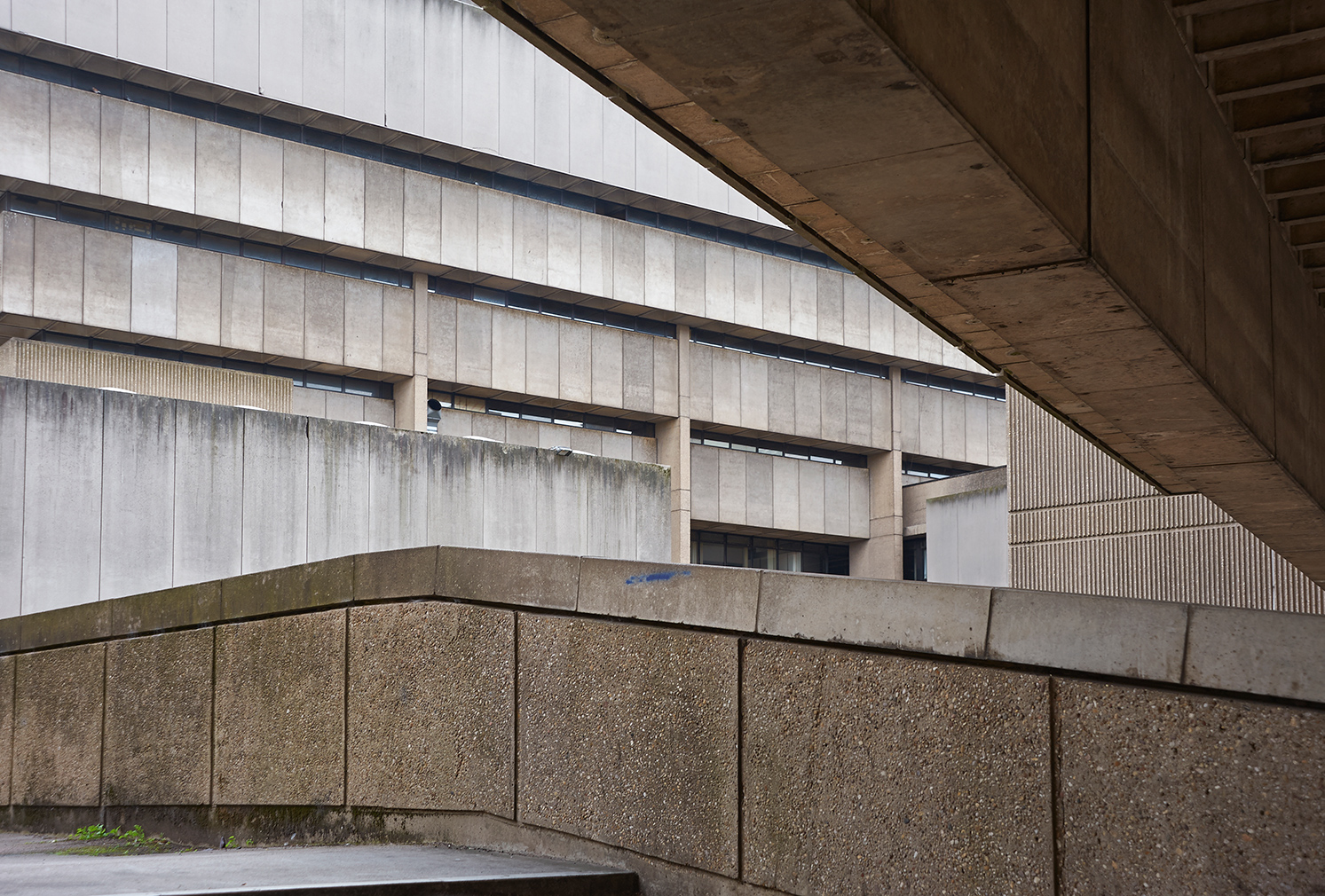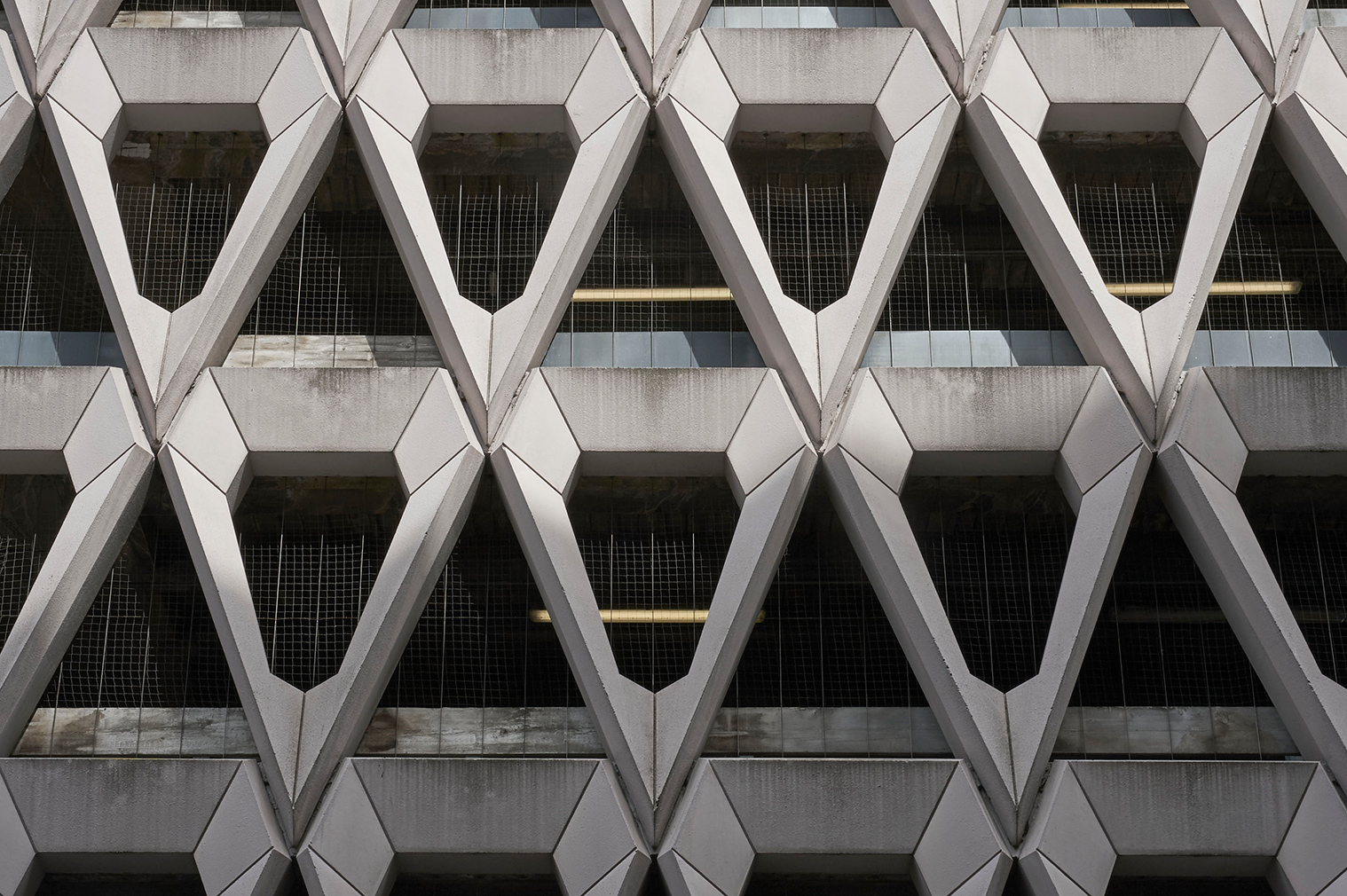‘What draws me to Brutalism is that it’s not afraid or ashamed of what it is’, says Jo Underhill. ‘It’s not apologetic – and in a way it’s anti-beauty.’
The Hertfordshire-based photographer has been shooting some of the UK’s best loved – and most maligned – concrete buildings for her ongoing series, Beautiful Brutalism.

Murray Edwards College at Cambridge University by Chamberlin, Powell & Bon, 1966. Photography: Jo Underhill

London’s Leatherhead Theatre by Roderick Ham, 1969. Photography: Jo Underhill

London’s Welbeck Car Park by Michael Blampied & Partners, 1971. Photography: Jo Underhill

The Finnish Church in London by Cyrill Mardall- Sjöström, 1958. Photography: Jo Underhill

Cambridge University’s Churchill College by Richard Sheppard Robson & Partners, 1968. Photography: Jo Underhill

London’s National Theatre by Denys Lasdun, 1976. Photography: Jo Underhill

London’s National Theatre by Denys Lasdun, 1976. Photography: Jo Underhill

The Tonwell water tower by Edmund C Percey of Scherrer and Hicks, 1964. Photography: Jo Underhill

Brunswick Centre façade by Patrick Hodgkinson, 1972. Photography: Jo Underhill
‘I try and capture details of the texture of the concrete, especially when it’s mixed with other materials,’ she says. ‘I love the contrast between wood and concrete – the warmth and the cooler tones.’
Among big hitting Brutalist architecture such as the National Theatre and the Hayward Gallery, Underhill has trained her lens on lesser-known textural structures.

‘Unfortunately not all Brutalist buildings were built with the same design vision,’ admits the photographer. ‘People have lumped Brutalist greats – such as Denys Lasdun’s National Theatre and the (now demolished) Birmingham Central Library by John Madin – in together with the poorly made tower blocks and car parks built by local authorities in the 1960s and 1970s.’

London’s Welbeck Car Park, currently at risk of demolition, is such a victim: ’People are more aware of the Brutalist style now than they were five years ago, but quite a bit of it has already been demolished, even though it’s only 40 or 50 years old. To me, it hasn’t had enough of a life to warrant that.’
Designed by Michael Blampied and Partners in 1971, Welbeck features an elaborate concrete diamond facade. It was sold last year to make way for a £600m hotel, but has been named as one of the most important unsung buildings in the capital, by architect Sam Jacob who describes it as ‘simultaneously practical and symbolic.’
Underhill’s Instagram and blog serve as a love letter to its concrete planes, whose future looks bleak.
This project came to us via submissions@thespaces.com
Are you a photographer working on a project we should know about? Send us an email, or tag us on Instagram using #thespacesilike
Read next: Explore Tokyo’s Brutalist subterranean storm drains

















